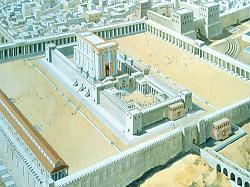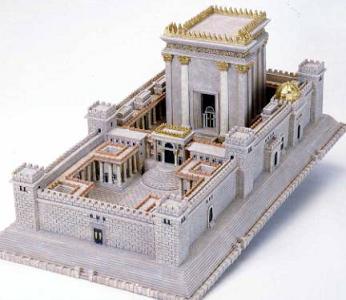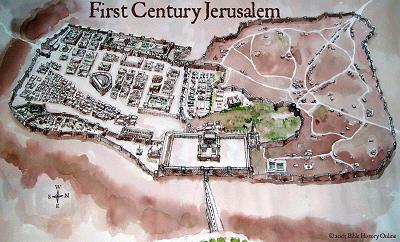|
|
 |
|
The Manifest Glory of Rome: The Roman Triumph |
|
written
by daw84 / 09.04.2005 |
|
|
| |
Introduction |
| |
| |

|
| http://www.templeinstitute.org/
gallery_28.htm |
| Fig. 1 |
| Herod's Temple |
| |
|
| |

|
| http://www.templesanjose.org/
JudaismInfo/faq/templewall.htm |
| Fig. 2 |
| Solomon's Temple |
| |
|
| |

|
| http://www.preteristarchive.com/
images/pixx_02_jerusalem_history.html |
| Fig. 3 |
| Map of Ancient Jerusalem |
| |
|
| |

|
| http://encarta.msn.com/
media_461562175_7615
57857_-1_1/Catiline.html |
| Fig. 4 |
| The Roman Senate |
| |
|
Decades prior to the destruction of the Temple, Jesus Christ prophesied its tragic destruction as He and His disciples viewed Herod’s marvelous temple.
Some of his disciples were remarking about how the temple was adorned with beautiful stones and gifts dedicated to God. But Jesus said, “As for what you see here, the time will come when not one stone will be left on another; every one of them will be thrown down.” (Luke 21: 5-6)
When the view of the Temple finally reached the eyes of Titus in 70 AD, he must have marveled at the glory in a similar fashion. Titus and his father, the great Emperor Vespasian, had been squelching the rebellion throughout Palestine and Syria since 69, and when his father’s services were called upon in Egypt, Titus was entrusted with the command of the Roman Army to complete the crushing of the rebellion.
Titus marched upon Jerusalem to find the city in a state of disarray. Three separate groups of Zealots had emerged, each desiring to take control of the struggling rebellion. Furthermore, the time of year had arrived for the Jewish Passover, their largest religious holiday during which all of the Jews came into Jerusalem to make sacrifices at the Temple, making the city crowded and chaotic.
By means of a siege, Titus quickly took over the two outer walls of the heavily-fortified city, after which he came upon Herod’s Temple. Although less-grand than the original temple—that of Solomon which was destroyed by the Babylonians in 586 BC—this temple was still a sight to behold. Most importantly it was the place where the one and only God of the Jews resided, the holiest site in all of Israel, therefore the Jews fought passionately for its protection. After a failed attempt to starve out the resistance, the Romans launched a full-scale attack over the wall surrounding the temple. In the heat of battle however, a Roman soldier threw a flaming firebrand onto the roof of the temple and as the temple was burning about him, Titus entered the temple and beheld the Holy of Holies, a site previously viewed only by Jewish priests. The Romans seized several items from within the temple, most significantly a large menorah, the seven-branched candlestick symbolizing the Jews as a light to the world.
After Titus and his army finished stomping out the rebellion, they returned to Rome to find that he, his brother Domitian, and his father had each been officially awarded triumphs by the senate. Their individual efforts had each exceeded the five requirements set forth by the senate. First, they were each magistrates. Second, they had defeated the enemy in a just war against a foreign enemy, one sanctioned by the senate, thereby approved by the people and mandatory to the survival of the empire. Third, they had each killed well over 5,000 men. Fourth, and perhaps most importantly as it showed the glory of Rome and instilled pride and confidence in its people, they had returned with massive amounts of trophies and prisoners. Finally, the war was entirely complete which enabled the soldiers to return for the glorious celebration.
Rather than have three separate triumphs, the family elected to have one combined triumph, and the ensuing triumph was the greatest triumph of all time.
|
| |
|
| |
|
|
 |
|




